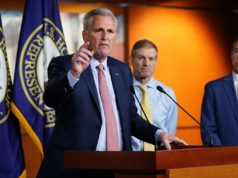
We encourage all sorts of things through the tax code. We have incentives for home ownership, oil drilling, commuter parking, racehorses and farm equipment. We even let corporations write off punitive damages from lawsuits.
But since the beginning of this year, there are no longer any federal tax incentives encouraging energy efficiency — none at all. This is not smart.
ADVERTISEMENT
Hopefully everyone by now knows of the payoff that energy efficiency improvements can deliver. Consumers and businesses are saving billions of dollars a year from efficiency upgrades to homes, buildings and appliances that have for years been encouraged by federal policy. At the same time, we’re creating jobs weatherizing homes, manufacturing high-efficiency appliances and building materials like windows and insulation. We’re also better managing energy demand on stressed electrical grids and significantly reducing pollution.
While efficiency upgrades usually have a quick payback through lower energy bills, the upfront costs remain an obstacle for millions of American homeowners and building owners even though they would save money long-term. Innovative new financing programs are popping up around the country to help address this challenge. But tax incentives – such as ones that expired on Dec. 31, 2016 that gave homeowners a 10 percent tax credit for efficiency improvements, up to $500 – are a proven, cost-effective way of getting people to act.
Encouraging behavior that creates economic growth and other societal benefits is precisely the kind of thing we should be doing with the tax code. Every time a homeowner or building owner upgrades efficiency we’re supporting job growth – not just construction contractors but manufacturers, truck drivers, engineers and so on. The U.S. Energy Department estimates that energy efficiency supports nearly 2.2 million jobs nationwide. Seven in 10 of those jobs are at small businesses.
There are plenty of ways Congress can encourage this economic activity through the tax code. First would be extending the incentives that expired at the end of last year. But as Congress and the Trump administration explore tax reform, we should also move toward creative new strategies that better meet today’s needs.
For example, the Trump administration has focused on rebuilding American manufacturing. What we often overlook is that many of our factories are operating with aging equipment and machinery that hurts their ability to compete on the global stage. Incentivizing capital investments in modern, efficient technology is one of the best things we can do to improve productivity and help our manufacturing sector thrive.
We also need to get rid of disincentives in the tax code, such as current rules that require efficiency investments to be depreciated over decades. We have accelerated depreciation for all kinds of investments, speeding up the depreciation of an asset and thus reducing taxes on it faster. But high-efficiency investments in commercial buildings – equipment like heating and air conditioning, roofing systems and lighting – are depreciated over almost 40 years. The tax code is effectively telling people not to replace it!
And finally, if President Trump and Congress are serious about using tax policy to help rebuild our infrastructure, we must ensure that efficiency is a top priority. People often think of infrastructure as roads and bridges, but we can’t forget the electric grid, water distribution and other systems that we all depend on in our daily lives. It’s no secret that this infrastructure is in desperate need of upgrade. The new infrastructure will be with us for decades, and incorporating efficiency upgrades will more than pay for itself over time, delivering huge savings to taxpayers and ratepayers.
The beauty of all of this is that energy efficiency is traditionally a bipartisan endeavor on Capitol Hill. At a time when America is divided sharply on so many issues, energy efficiency tax incentives are a practical, cost-saving solution that deserve a prominent place in any tax legislation that moves through Congress this year. This would be smart.
Kateri Callahan is president of the Alliance to Save Energy.
The views expressed by this author are their own and are not the views of The Hill.







